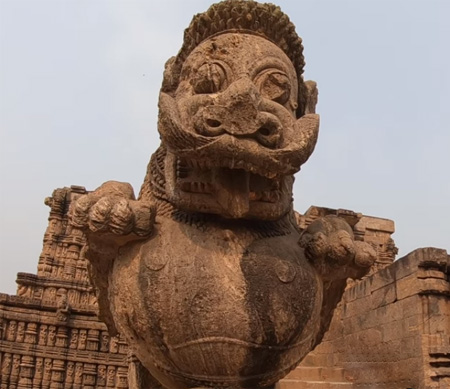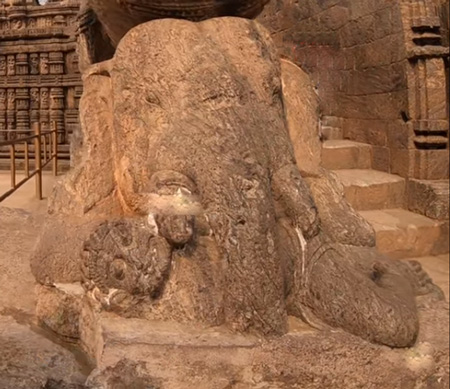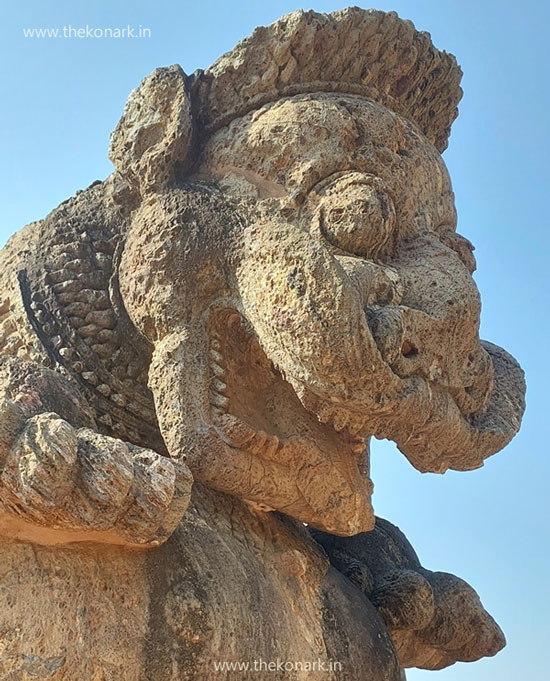

At the entrance of the nata mandapa (dancing hall), there are two giant stone sculptures of Gaja-Simha on both sides. They act as the royal guard of Konark temple. Each of the sculptures shows three characters - Nara, Gaja and Simha. In local Odia language, 'Nara' means man, 'Gaja' means elephant and 'Simha' means lion. In this sculpture, the man is at the bottom, the elephant is upon the man and the lion is upon the elephant, it looks like both the lion and elephant are crushing the man with their combined weight.
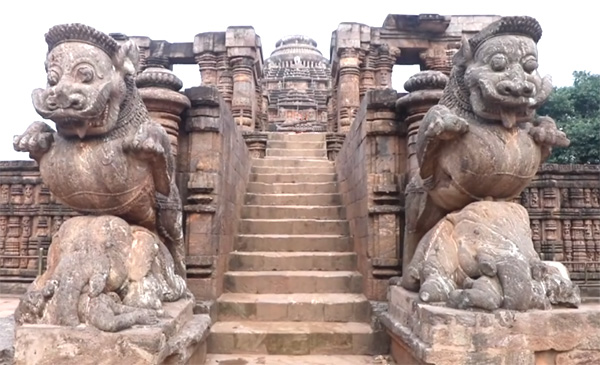
In India, when we visit any Hindu temple, we mostly find either lions or elephants at the entrance. But at Konark temple we find this unique symbolic sculpture of Gajasimha at the entrance and it has intense meaning.
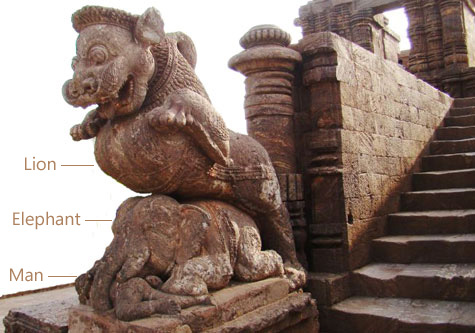
In Indian culture, the Elephant symbolizes wealth or prosperity, therefore it is associated with Goddess Lakshmi (The Goddess of Wealth). The Lion symbolizes power or pride, therefore it is always associated with Goddess Durga (The Goddess of Shakti). The Gaja-simha sculpture is an indication to the visitors that a man with desire of wealth and power in his mind cannot walk towards God. To achieve spiritual growth, one must get rid of these desires. As shown in the statue, it reminds us that what desire for power and wealth can do to a human being.
